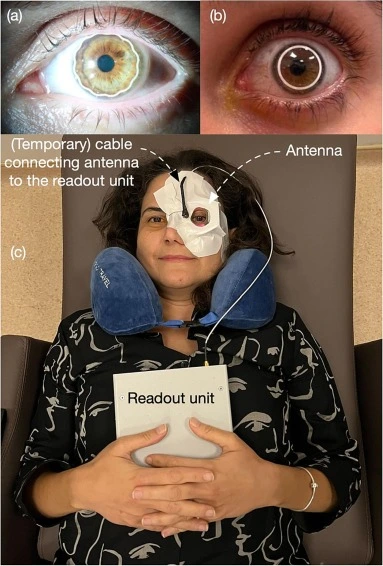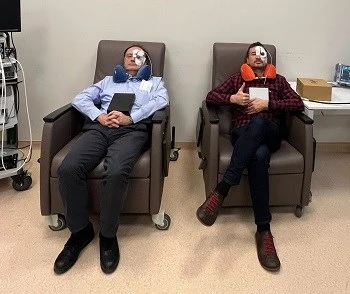In a significant medical advancement, researchers from Northumbria University in the UK and Boğaziçi University in Turkey have unveiled a groundbreaking contact lens equipped with micro-sensors designed to detect changes in intraocular pressure (IOP) in the eye, which is a sign of glaucoma.
The innovative technology aims to address a global health concern, as glaucoma affects approximately 70 million individuals worldwide, with nearly half of those affected unaware of their condition.
Glaucoma, a condition leading to irreversible vision loss if left untreated, typically develops slowly over time. Often, cases are only identified during routine eye tests, by which point irreversible damage may have occurred. The newly developed contact lenses offer a potential solution to this issue by continuously monitoring intraocular pressure (IOP), the leading cause of optic nerve damage.
The contact lens has a tiny sensor inside that is an electrically passive, metamaterial-based resonator, which means it can produce and detect electromagnetic waves without any power source. The sensor can be measured using a wearable antenna patch that is attached to the contact lens.

The researchers have published their findings in the journal Contact Lens and Anterior Eye, where they report the results of a first-in-human pilot study with six healthy volunteers, who had their IOP measured by the contact lens and by a conventional device called Goldmann applanation tonometer.
The study showed that the contact lens can monitor the IOP fluctuations continuously for 24 hours and provide more accurate and convenient diagnosis of glaucoma than traditional methods, which require hospitalization and repeated measurements.

In a pilot study involving six (6) participants, the researchers confirmed the success of the technology. The next phase involves a more extensive study with a larger group over the coming year. The team plans to make the lenses commercially available through their spin-off company, GlakoLens.
Professor Torun highlighted the importance of monitoring IOP variations over a 24-hour period, stating, “Traditional methods involve single-day clinic visits, which may yield misleading results due to the natural fluctuation of IOP.”
Unlike previous attempts to develop contact lenses for IOP measurement, which relied on electrically active silicon chips, the GlakoLens utilizes an electrically passive sensor embedded in a disposable soft contact lens. This design ensures greater comfort for the wearer, allowing them to go about their daily activities without disruption.
Professor Torun expressed optimism about the technology’s potential impact, stating, “We believe this technology has huge potential and could not only save the sight of patients in the early stages of glaucoma but also provide early diagnosis of other diseases in the future.” The groundbreaking development offers hope for improving the early detection and management of glaucoma, ultimately benefiting millions around the world.
Download: Full research paper

